Press the right key for the next slide (or swipe left)
also ...
Press the left key to go backwards (or swipe right)
Press n to toggle whether notes are shown (no equivalent if you don't have a keyboard)
Press m or double tap to see a menu of slides
Causal Interactions
The third requirement on knowledge of objects is an ability to track objects through causal interactions.
Here we're interested in very simple causal interactions, such as the collision of two balls or the interaction of a ball with a barrier.
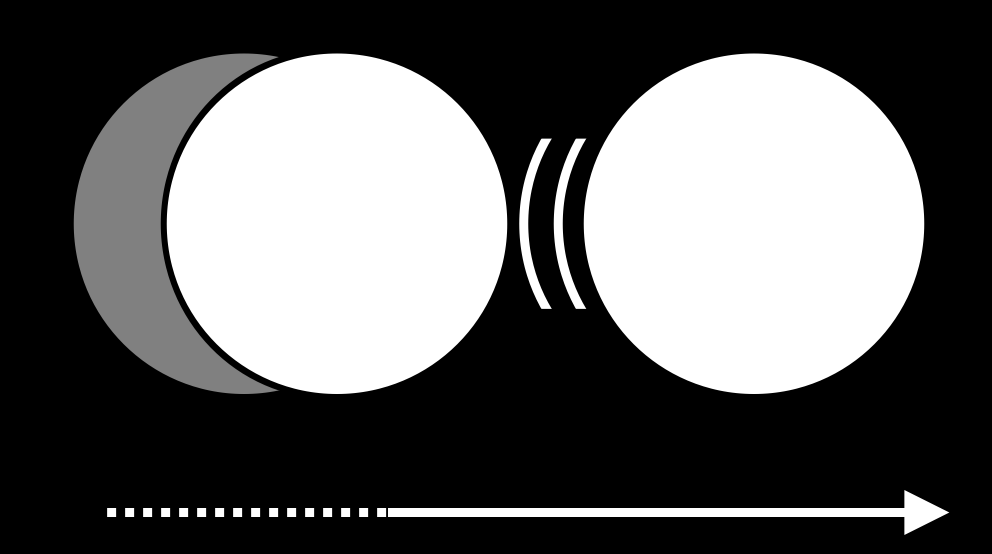
Consider this case where a ball falls and lands on a bench.
Suppose that there was a barrier in front of the bench, like the dotted line.
Because the bench protrudes from the barrier, you could easily see where the ball will land.
But of course you can only see this if you know that barriers stop solid balls.
Spelke used this observation to provide evidence that 4-month-old infants can track objects' causal interactions.
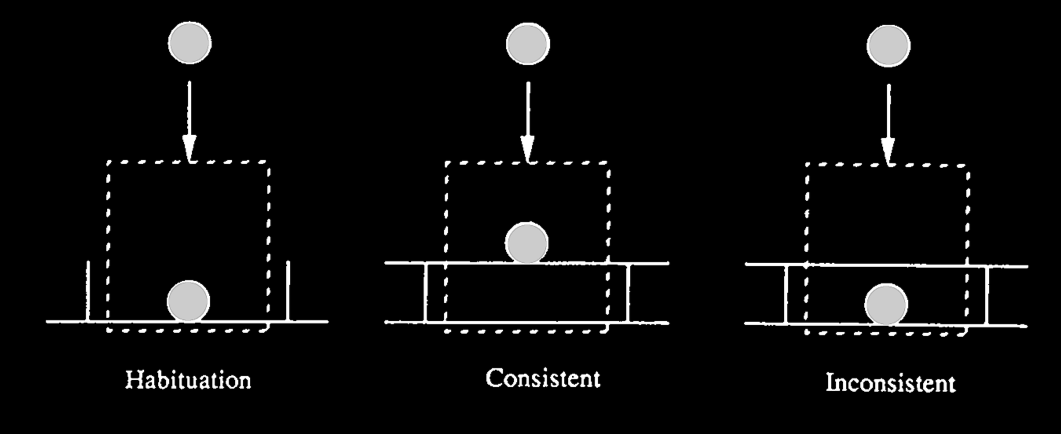
Spelke et al 1992, figure 2
Infants were habituated to a display in which a ball fell behind a screen, the screen came forwards and the ball was revealed to be on the ground, just where you'd expect it to be.
After habituation infants were shown one of two displays.
Infants in the 'consistent group' were shown this.
Whereas infants in the 'inconsistent group' were shown this.
What should we predict?
If infants were only paying attention to the shapes and ignoring properties like solid, they should have dishabituated more to the consistent than to the inconsistent stimlus.
After all, that stimlus is more different from the habituation stimulus in terms of the surfaces.
But if infants were are to track some simple causal interactions, then they might dishabituate to the 'inconsistent' stimulus more than to the 'consistent' stimulus because that one involves an apparent violation of a physical laws.
Here are the results.
(Recall that the subjects are 4-month-old infants.)
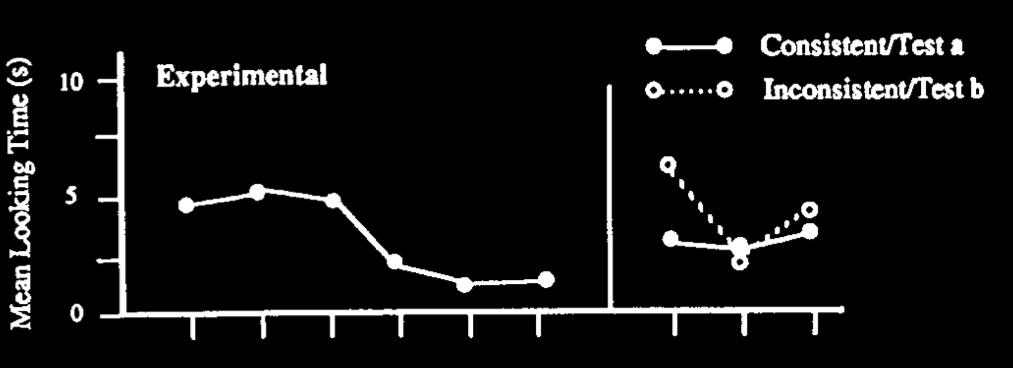
Spelke et al 1992, figure 3
This is evidence that infants can track causal interactions among objects, even when those causal interactions are occluded.
Chimpanzees also understand something of phyiscal interactions insofar as their looking times show sensitivity to support relations \citep{cacchione:2004_recognizing}.
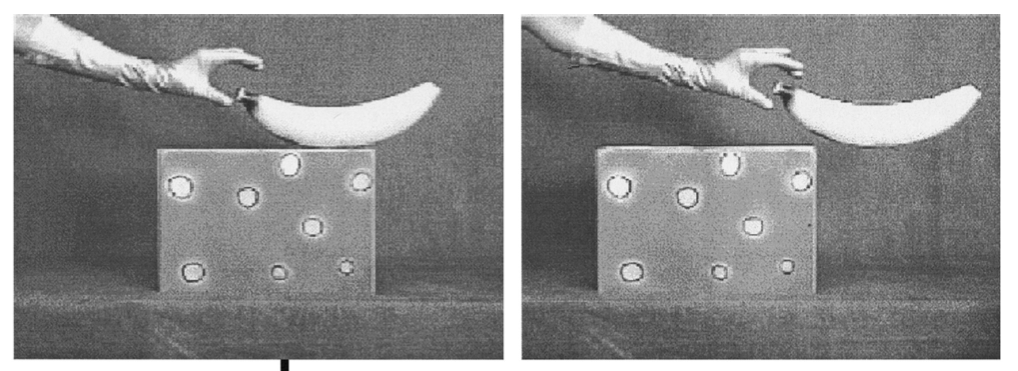
Cacchione & Krist 2004, figure 2
Here are the results.
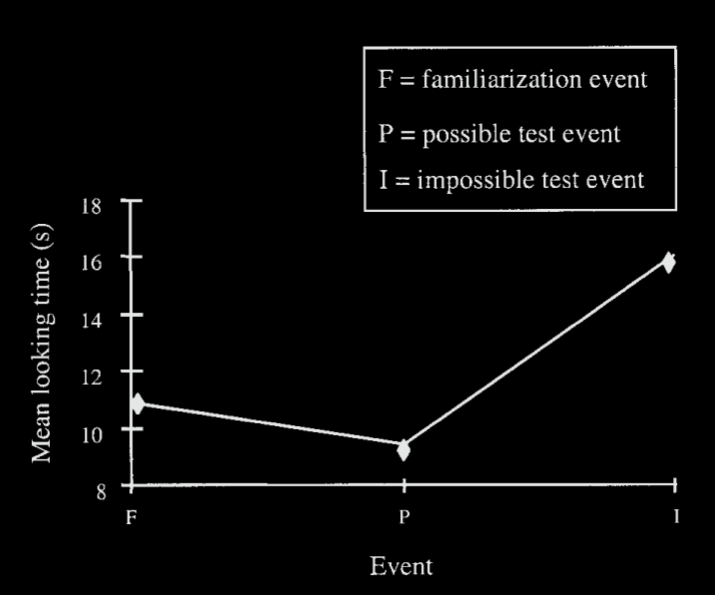
Cacchione & Krist 2004, figure 3
Lots of studies like this have been done with infants in their first six months of life.
Dogs can do this too.
This experiment used a search measure rather than a looking time measure.
Dogs had to retrieve a treat. The right location to search depended on whether the barrier was present or absent.
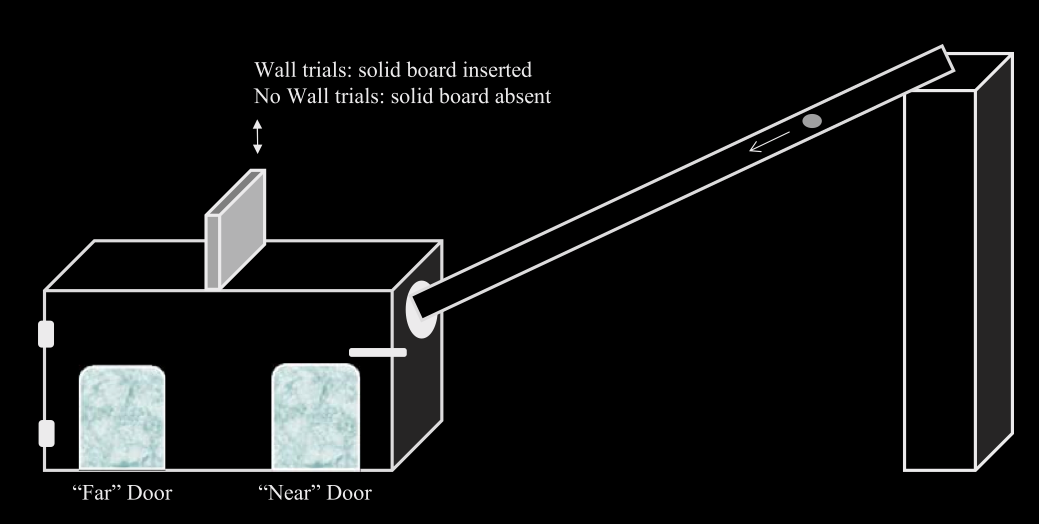
Kundey et al 2010, figure 1
The results show brilliant performance.
'Dogs correctly searched the near location when the barrier was present and the far location when the barrier was absent. They displayed this behavior from the first trial' \citep{kundey:2010_domesticated} (from the abstract).
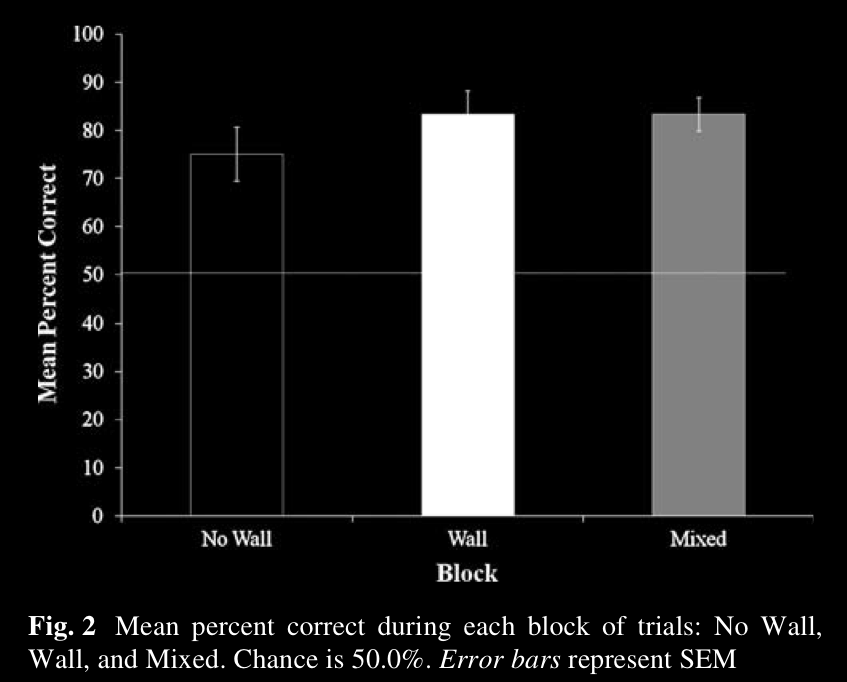
Kundey et al 2010, figure 2
How do infants, adult humans and nonhumans track causal interactions among objects (including causal relations like support)?
Spelke suggests that the principles of object perception can explain this.
how?
For example, the position of an object falling onto a bench is predicted by the principle of continuity mentioned earlier.
\emph{Principle of continuity} An object traces exactly one connected path over space and time \citep[p.\ 113]{spelke:1995_spatiotemporal}.
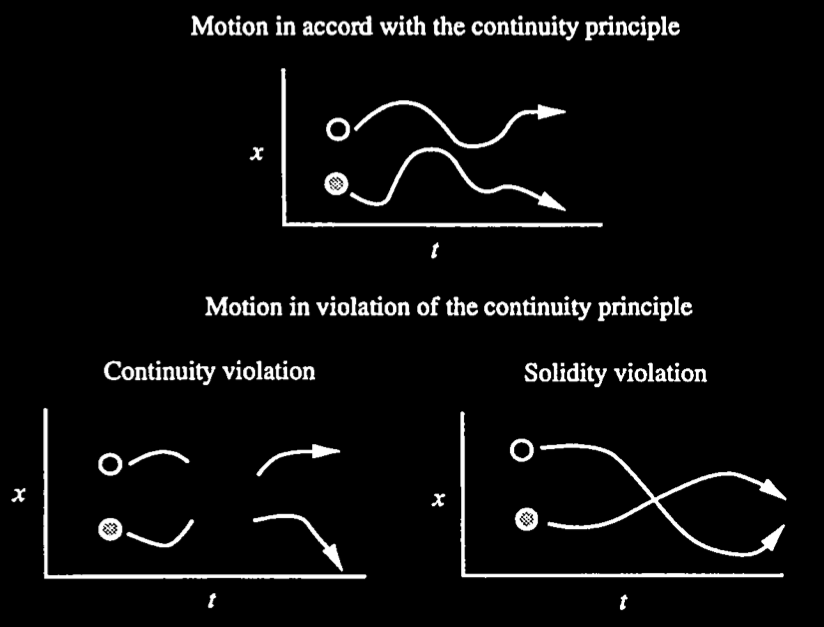
Spelke et al (1995, figure 1)
(The other principles of object perception are on your handout.)

Spelke et al 1992, figure 2

Spelke et al (1995, figure 1)
This is Spelke's brilliant insight.
‘object perception reflects basic constraints on the motions of physical bodies …’
(Spelke 1990: 51)
\citep[p.\ 51]{Spelke:1990jn}
‘A single system of knowledge … appears to underlie object perception and physical reasoning’
\citep[p.\ 175]{Carey:1994bh}
(Carey and Spelke 1994: 175)
I think there's something here that should be uncontroversial, and something that's more controversial.
But first let me recap ...